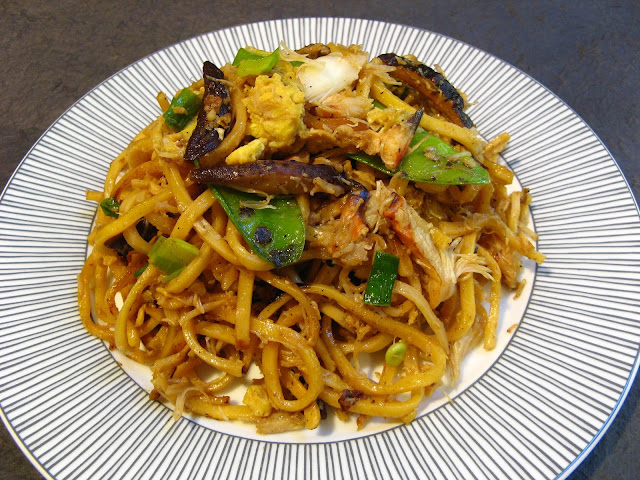My previous noodle recipe using beef hearts, Curry
Tomato Beef Heart Chow Mein (咖哩番茄牛心炒麵,
Gaa3 Lei1 Faan1 Ke4 Ngau4
Sam1 Caau2 Min6), was a variation on a
tomato beef curry noodles using chow mein noodles. This recipe uses the thinner
Hong Kong noodles (also known as Won Ton Noodles), so the ingredients are cut small
to compliment the noodles width, and uses a simple soy based sauce for
flavoring. As a reminder, beef hearts have the same texture as chicken gizzards
and, of course, taste like beef. You can think of them as a crunchy version of
beef. Also since the heart is a muscle, beef hearts do not have an organ taste,
for instance, like liver. You can purchase beef hearts at your local Asian
market, usually already cut into pieces.
Enjoy!




















